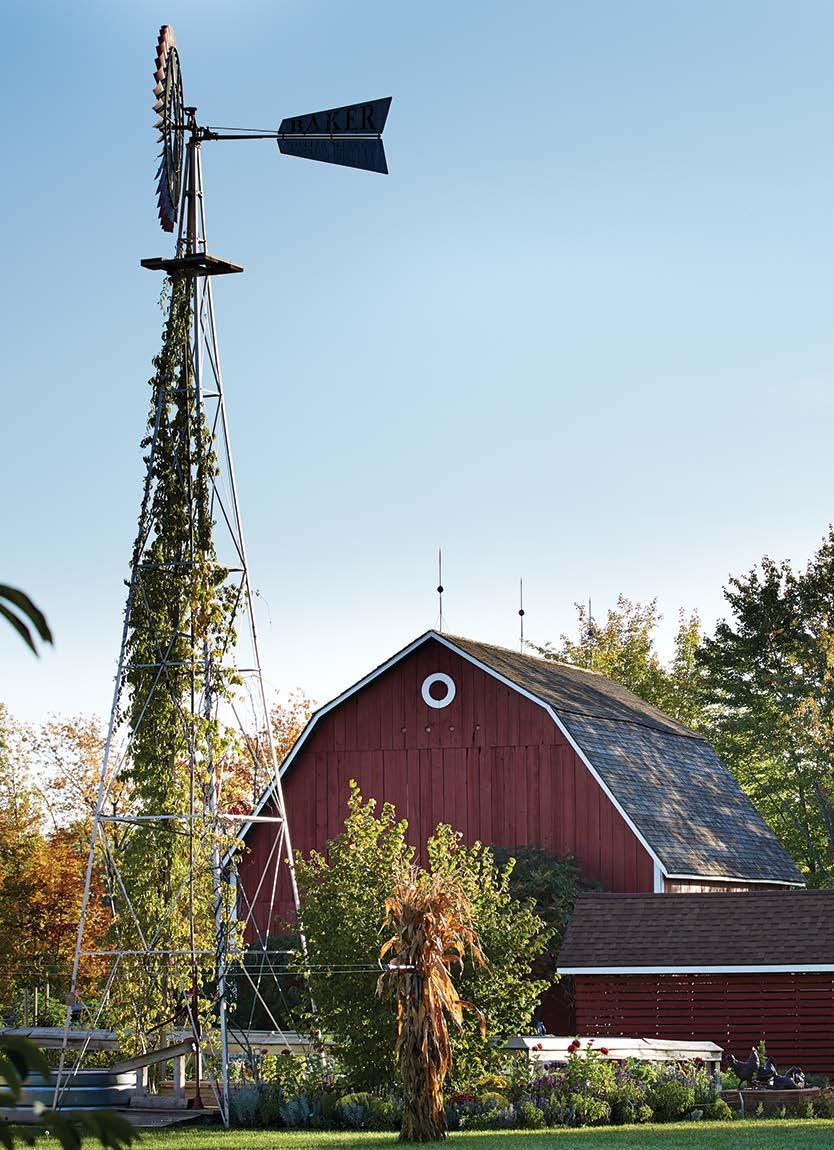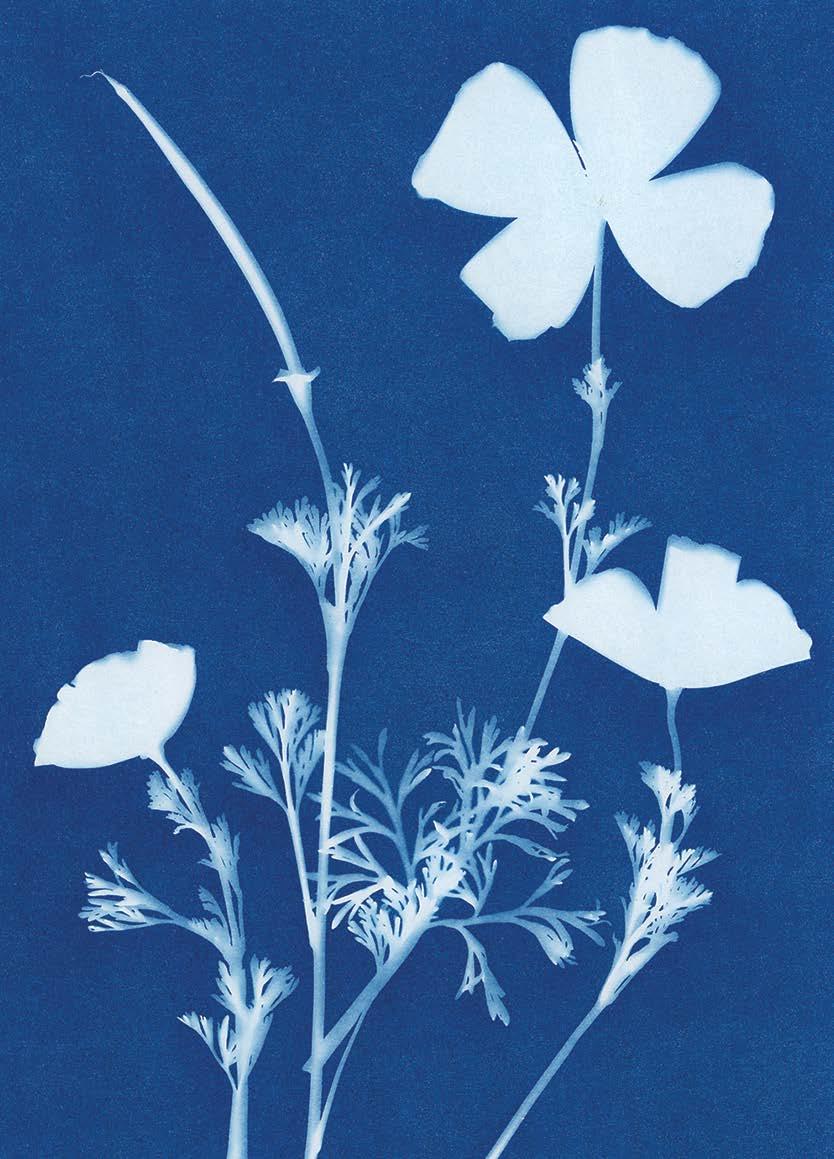
5 minute read
Sculpture
Mark Mennin. Emperor's Clothing. 2006. Travertine, 16 x 27 x 27 inches.
Mark Mennin. Embedded (detail of ArtPrize entry). 2022. Granite, 10 x 5 feet. © 2022 Mark Mennin.
Advertisement
Mark Mennin: ArtPrize and Written in Stone
Sculptor Mark Mennin was smitten by stone at the young age of 9, during his first trip to Italy where he encountered the marvels of marble statuary. Stone has become Mennin’s medium of choice for the past 40 years, and he has used this dense matter to carve everything from small dollhouse furniture to an entire cliff face in the South of France. Regardless of scale, throughout all his work Mennin has retained a fascination with the material itself, including its distinct physical traits formed over millions of years and the geologic ethnicity or “birthplace” of all quarried stone. Mennin has also steadily probed the primal relationship between humans and stone, grounding us in the Earth and the histories of both built and natural stone environments. Accordingly, much of the artist’s work for public spaces and private commissions solicit involvement and create dynamics for people to interact with the work. “Lying on a solid earth material is a tidy way of rolling in the mud,” Mennin notes, “and the variety of textured surfaces makes for a very tactile, sensual experience.” In this vein, Mennin’s entry for ArtPrize 2022 comprises three oversized stone beds, situated outdoors on the Frey Foundation Plaza. This trio of voluptuous structures, titled Embedded, toys with our perception of hard and soft, heavy and light. As such, these pillowy stone sculptures offer an invitation to test our strength and sense of touch. Several of Mennin’s preferred sculpted forms, like clothing or cushions, upend our expectations of stone’s standard qualities. Along with the ArtPrize entry, other sculptures by Mennin will be displayed in the exhibition Written in Stone. Within the PNC Portico, a marble colonnade features five recycled columns with carved Elizabethan ruff collars for capitals. The marble columns came from a 19th-century New York City building that was partially destroyed in the 1930s and buried in a New Jersey landfill. The “found” or repurposed stone in Mennin’s fanciful colonnade literally has history inscribed in its form, along with the record of the stone’s own physical past. Additional sculpture will be featured in the Courtyard Level of the Welcome Center. Most of Mennin’s projects, including his carved beds, enlist reclaimed stone or recycled scrap and slag from various quarries. While we spend much of our lives surrounded by stone, we too rarely reflect on the source or nature of this ubiquitous material. “Stone is just hardened earth,” Mennin matter-of-factly states, yet his knowing sculptures make us revel in the glories of a material that’s as common as dirt.
Mark Mennin’s sculptures and commissions are found in several private and public collections, including Laumeier Sculpture Park, Missouri; The deCordova Museum and Sculpture Park, Massachusetts; and Grounds for Sculpture, New Jersey. Mennin has taught sculpture and art history for over 20 years at Parsons School of Design and The New York Academy of Art in New York City. He resides and executes all his sculptures in a large indooroutdoor atelier in Connecticut.
Written in Stone, September 2–November 27, 2022. ArtPrize Embedded, September 15–October 2, 2022. by Suzanne Ramljak, Chief Curator

New Sculpture at Meijer Gardens
Ariel Schlesinger. Ways to Say Goodbye. 2019. Aluminum and glass, height 20 feet.
Ways to Say Goodbye, by Israeli artist Ariel Schlesinger, joined the Frederik Meijer Gardens & Sculpture Park collection and was underwritten by the Jewish Federation of Grand Rapids and the Pestka Family, to serve as the focus of a Holocaust memorial. The recently installed, 20-foot-tall cast aluminum tree commemorates Holocaust survivor Henry Pestka as well as the millions of Jews who were killed under Nazi rule.
As a memorial to those who survived and those who perished during the Holocaust, the sculpture fittingly conveys a dual sense of hope and grief. While the upright tree suggests growth and potential, its stark limbs bearing glass shards evoke loss and destruction. Resilience and fragility are conjoined in this charged sculpture, which speaks poignantly to those who endured the atrocities of the Holocaust. Such duality is a recurring characteristic within Schlesinger’s work. “I am fascinated by how one thing can be seen in different ways,” said the artist, who seeks to reveal the complexity and uncertainty of his subjects, often drawn from everyday circumstance. Schlesinger has lived and worked throughout the world, including in the United States, Mexico, England, and Germany, and his work has been widely exhibited and published. Ways to Say Goodbye is the first sculpture by the artist to enter a public collection in North America.

Cristina Iglesias. Pozo XI (in and around the walls) (Version 2). 2014. Stone, aluminum, mechanics and water, 44 x 102 x 102 inches.
Cristina Iglesias’ Pozo XI (in and around the walls) (Version 2) has taken its ideal place within the newly opened Tassell–Wisner–Bottrall English Perennial Garden. Set in an intimate courtyard, surrounded by a crown of pleached trees, her raised waterbed gives delight to those who come upon its half-hidden site. Iglesias cultivates such unexpected encounters within her work, stating “I think it’s important when someone doesn’t expect to see something and suddenly comes across it.”
One of Spain’s most celebrated artists, Iglesias has developed a rich vocabulary drawing on architecture, literature, nature, and history to create captivating installations and sculptures. Over the past 20 years, she has increasingly incorporated water into her work, exploring the physical dynamics and poetic associations of this ubiquitous liquid. The artist’s fountains and other water structures redirect our attention downward to subterranean sources and realign our sense of passing time. Her series of Pozos, or wells, feature sculpted interior terrains over which water flows in varying sequences. With elevated walls, these Pozos encourage viewers to lean upon the edge as if gazing into a wishing well. This same wonder and primal force of water infuses Iglesias’ ambitious public projects found in major cities around the world.
A survey exhibition of Cristina Iglesias’ work will be presented at Frederik Meijer Gardens & Sculpture Park in Spring 2023.











